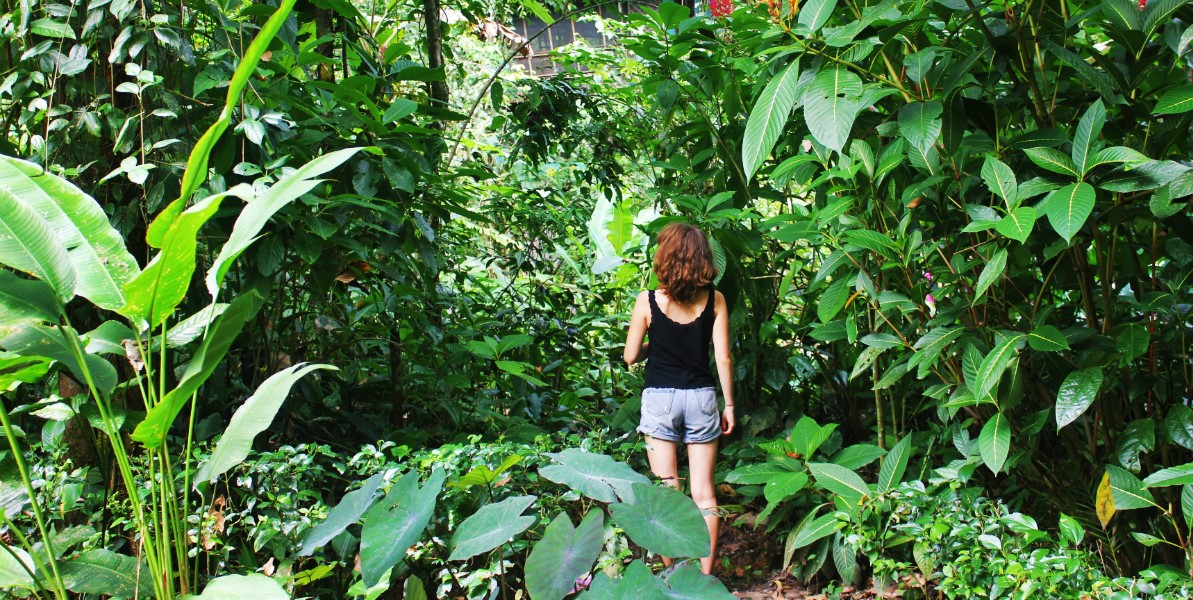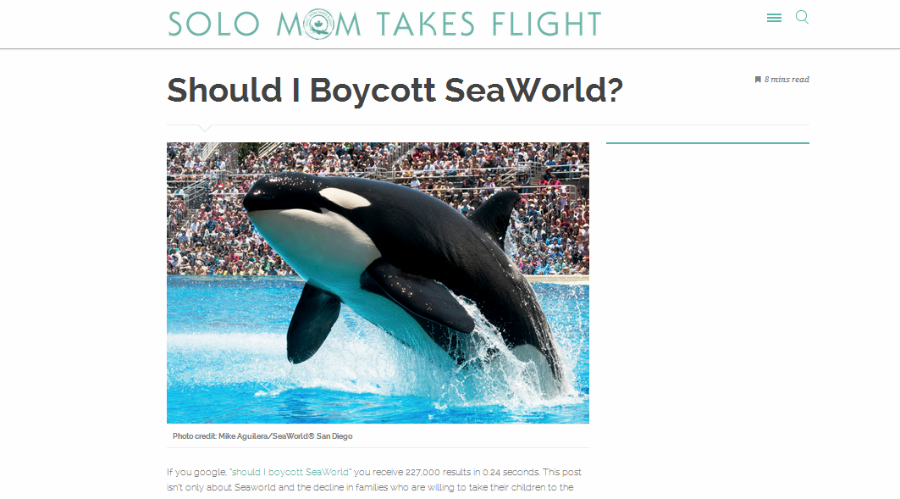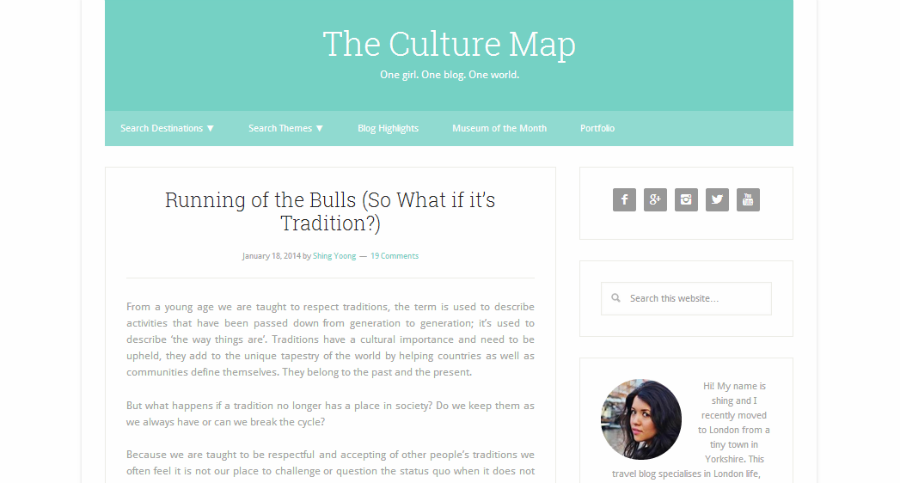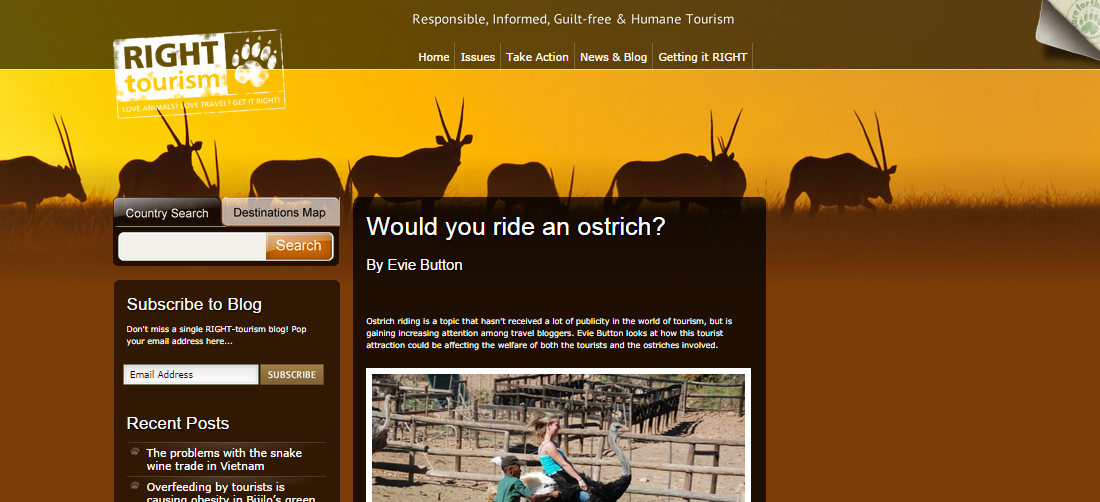6 Responsible Travel Blog Posts that Everyone Who Travels Should Read

If you read travel blogs, then you’ll know that 99% of posts are about quitting your job to travel, getting pleasantly lost in beautiful places, and having ‘life changing’ experiences.
It’s easy to be swept away by romantic notions of adventure and freedom when you think about travelling. I was too, in the beginning. As I read more news stories, followed more travel blogs, watched more documentaries, and began travelling long-term, I realised the vital importance of responsible tourism.
Being responsible is often eclipsed by being adventurous when it comes to travelling. Unfortunately, many travellers choose to participate in activities that are labelled as ‘life-changing’ or ‘once in a lifetime,’ which actually have negative consequences for the environment around us and the animals that live in it.
The following six blog posts are not all easy reading and perhaps you already know about the issues which they discuss, however the aim of this post is to inform those who don’t and raise awareness about the importance of doing your research so that you can travel responsibly.
Why Elephant Riding Should Be Removed from Your Bucket List from World Nomads
A good rule to remember is that if a tourist outfit offers anything other than getting to spend time with elephants, it is not friendly to them.
I originally heard about elephant riding from a friend at university who had been on a pivotal backpacking trip to Thailand. Her story about elephant riding stuck with me and was my revelation about the necessity of responsible tourism. I’ve read a lot of horror stories about elephant riding, and have my own post about why travellers should think twice about riding elephants, but this guest post from Diana from D Travels Round was one of the most informative I came across.

Article contains no graphic imagery.
A Photo For Facebook? You’ve Just ‘Liked’ Animal Abuse. from Bemused Backpacker
There isn’t anything inherently wrong with having the opportunity to see or interact with wildlife … if it is done right.
When I was a student, I had a lot of Facebook ‘friends’ who were excitedly jetting off to exotic locations for their gap years or holiday backpacking trips. Increasingly, my feed pulled up numerous photos of not only glorious beaches and cheap beers, but also of people posing with ‘wild’ animals. Tigers and elephants were the most common. These animals are not in their natural environment nor their natural state – if they were, they certainly wouldn’t be posing for photos with humans. Michael’s post sums up my own thoughts on the issue and discusses the detrimental affect an ‘impressive’ Facebook photo can have for the animals involved.

Article contains images that may upset readers.

Should I Boycott SeaWorld? from Solo Mom Takes Flight
If you walk into SeaWorld and your gut tells you that isn’t where you want to be, you probably should not expose your kids to it either.
A year ago, I watched Blackfish, a documentary about the captive orcas held by SeaWorld. Though I was already aware of the issues surrounding this controversy, the film really struck a chord with me. I didn’t visit many marine parks or zoos when I was little as my own mum questioned the conditions in which the animals were housed, and rightly so.
Making the decision to visit zoos, marine parks, or even swim with dolphins is one that should be well informed and thoughtful. When I was 13, I swam with dolphins. At the time, I knew very little about it and my only thoughts were that I would love to see a dolphin. 10 years later, I would make a very different decision.
Article contains no graphic imagery.
Running of the Bulls (So What if it’s Tradition?) from The Culture Map
But what happens if a tradition no longer has a place in society? Do we keep them as we always have or can we break the cycle?
I’ve read a lot of discussion from both sides of the bull running argument and have heard some strong opinions voiced by those who feel the event is of vital cultural importance. Though it’s understandable that people greatly value the traditions of their country, in today’s world we need to move away from any activities, even if they are traditions, that condone animal abuse.
Breaking the cycle of tradition, as Shing says in her post, is not easy but sometimes it is necessary. Though questioning the traditions of another culture often doesn’t feel right to someone who is outside of it, some debates need to be had and I admire Shing’s bravery in doing so.
Article contains one relatively graphic image.
Would You Ride an Ostrich? from Right Tourism
The process of actually riding an ostrich involves the animal being herded into a small pen, and a bag thrown over its head as an attempt to calm it.
While reading travel blogs over the past few months, I was upset to see an increasing number of bloggers promoting ostrich riding. One blog labelled ostrich riding as ‘a new form of green transportation’ and another said, ‘seriously, the funniest thing I’ve ever seen.’ Not only is the first of these quotes completely unrealistic, but unfortunately they are encouraging irresponsible tourism. On one travel blog, I read a post warning readers never to ride an elephant, but happily encouraging them to sling themselves onto the back of an ostrich.
I first heard about ostrich riding when I was in Vietnam, but fortunately I didn’t meet any tourists who were thinking that it was a good idea. In reality, ostrich riding goes on around the world, but particularly in Africa. It is not only dangerous for the human attempting to ride the ostrich, but also for the animal itself. Ostriches are not built to carry heavy weights around small pens, their bodies are designed for fast running across large spaces. Evie’s write up on Right Tourism explains in detail the process of ostrich riding and the harm it can cause to the riders and the ostriches.
Article contains no graphic imagery.
Ecotourism and Responsible Travel: Useful Tips from Expert Travel Bloggers from Nomad is Beautiful
You can start with these small yet impactful steps yourself. In the end, it’s always best to start yourself if you want to motivate others to follow.
When it comes to travelling responsibly, animal welfare isn’t the only factor to be considered. From reusing water bottles and eating local when you travel to using carsharing or even DIY biodiesel to get around, Ivana and Gianni have pulled together eco-friendly tips from some of the best travel bloggers around. For new travellers, much of the advice on offer is invaluable, and even for us more seasoned travellers there are a couple of quirky ideas to discover.
Article contains no graphic imagery.
We have more access now than ever before to information and research to help us make informed decisions about the activities we choose to participate in when travelling and at home. Unfortunately, companies offering experiences like the ones discussed in some of these article may have their own agendas and it’s best to double check their claims before signing up for anything.

If you would like more information on the activities discussed in these articles or would like to learn about other related issues, I recommend the Right Tourism website.
What are your thoughts on the issues and activities discussed above? Perhaps you have a different side of the story to share?















Sharon
I love your informative, non bias and non judgmental blog. Thank you for directing me to the Right Tourism website. You certainly have made me think and I want my footprint to be a step in the right direction!
Charlie on Travel
Thanks, Sharon. It’s all about reading, researching and learning all the time. No one gets it totally right without spending the time, me included. I think it’s great that there are so many sources online where we can start healthy, thoughtful discussions on issues that need to be addressed in today’s world.
Michael Huxley
Thanks for including my article in your post Charlie, I’m honoured!
Raising awareness on these issues is so important, it is essential in fact, and it is great that so many responsible bloggers are writing about them and educating people. The more people are aware of what affect their actions have, the more people know how to have a positive affect rather than a negative one the better.
Charlie on Travel
Hi Michael, you’re more than welcome. Your article raises some very important points.
You’re very right and I’m really glad to see increasingly numbers of travel bloggers discussing the importance of animal welfare and of their actions regarding a variety of issues.
Thanks so much for commenting as well!
Shing
Hi Charlie, thank you for writing this piece, not because you included my post but because this is what the essence of travel blogging, to me, should be about: making the world a better place.
I think more and more people are waking up, and realising there is world beyond what the media wants us to think. There are different outlets now, providing more options and alternative views, we don’t have to read from the same page, and blogging is one of the best ways to get a message across to a wider audience.
Here, you have mainly talked about animal welfare, but our impact on the environment is a huge issue I find myself thinking more and more about. Travelling so much means I have a negative impact on the planet: I am guilty of that so I need to minimise my footprint where possible. I often fail but I am trying and that is the important thing. Every little counts, isn’t it?
We constantly talk about what a beautiful planet we live in, yet the irony is that we do very little to protect it. Recently, after going a few times, I’ve fallen in love with the Arctic but the tragic thing is that due to our own carelessness leading to Global Warming, huge parts of the Arctic are depleting on an unprecedented scale. Ice is melting, and whilst that might not resonate with people, I’m sure the wildlife living in these areas does. Polar bears, which are a symbol of strength and survival, have been found dead due to starvation because the ice they need for hunting is melting. And if that’s not scary enough, the melting of the ice cap will, and is, impacting the whole world as sea levels rise. I can’t even conceive the possible ramifications of this.
Sorry for the rant and thanks again. You’ve inspired me.
Charlie on Travel
Hi Shing, Thanks for your very thoughtful comment. I have to say that I completely agree with you, and I always hope that my writing, blogging and general chatting will, in some way, make the world a better place too.
Yes, this post is mainly about animal welfare, you’re right. It’s just unfortunate that many of the ‘life changing’ travel activities seem to involve animals. I also got to thinking while I was compiling this, that there are very few blog posts discussing negative environmental impacts from tourism. I’m not sure whether that is because it’s not something that people first think of, or whether travel bloggers avoid the subject matter knowing that, as you say, they fly often etc.
Our environment really is suffering from the negative impacts of human behaviour. As you say, the situation with the Arctic is tragic and it makes me sad to think of the difficulties faced by the wildlife there. It scares me to think that we are going to lose incredible places in the world, incredible wildlife and plants may die out… Sometimes I wonder whether it’s really okay to fly at all..
On a smaller scale, I also think that people often neglect the small things that they can do for the environment because they think it won’t have a significant effect. At home in the UK and house sitting, so of my most ‘aware’ friends and neighbours don’t recycle or compost. As a traveller, I also try really hard not to always be throwing away and buying new plastic water bottles and similar things. The are small things, but as you say, every little counts.
I didn’t consider it a rant at all, and thought it was a very thoughtful, interesting piece. I’m glad to hear you’re feeling inspired!
The Guy
Hi Charlie and Shing,
This is most certainly a highly relevant and interesting area. All your articles selected have the theme of how badly humans treat many animals in the interest of tourism and human pleasure. I mean, since when did riding an ostrich become as natural as riding a horse or a motor bike? It doesn’t make sense.
As I travel more I feel more confident asking the awkward questions. Recently at a temple in India I inquired if an elephant giving blessings (by a tap on your head with it’s trunk) was fairly treated? My guide, who was actually a colleague rather than a tour guide assured me that it was. Yet when I went up for the elephant blessing I could see the animal was chained up and probably forcibly trained to perform this act. I’m not sure if that is true but I have my concerns.
I often see pictures of tourists with drugged tigers and so on. Is this really natural?
Earlier this year I was at the Steve Irwin Zoo just outside Brisbane and saw that you could book a walk with a tiger cub. Now since it was a cub it was less aggressive and more playful. From observing then watching zoo keepers bond with the tigers through play I could see what appeared to be a natural and mutually agreeable situation. With it being in such a conscientious zoo as well I felt more comfortable with the situation.
Ultimately, tourist spots do unnatural things for money. If people don’t pay to go and see it then it will stop. Simple supply and demand.
Charlie on Travel
Hi Guy! Yes, though the last one discusses a whole range of sustainable travel points. I agree too, I don’t know when this ostrich and elephant riding became such a norm for people, it really is very upsetting and such a strange leap that people have made. I think none of the things you point out are natural. If animals are doing anything other than running around in the wild, in their natural habitat, then in my opinion it’s not natural. And especially any activity where those animals are within close proximity to humans.
Certainly nature reserve and sanctuaries are doing great things to protect and conserve wildlife, and thought I am personally not a fan of zoos, I’m sure that some of them are also dong a great job. Animals being bred in captivity and those who were domesticated as pets or seriously injured and are unable to be released back into the wild really rely on the good work of people in those places.
And yes, I agree with you.
Melissa
I was just going to write a similar post. Only with a lot more graphic language. I lose respect for people I know when I see them doing any of these things. Especially when they KNOW it’s wrong. It drives me batshit crazy.
Charlie on Travel
Hi Melissa, it can be difficult, but also there are a lot of people who don’t ‘know’ that it’s wrong. There are plenty of people who don’t read travel blogs or whom it just hasn’t occurred to because they’ve only heard great stories about how wonderful swimming with dolphins is, for example, from others who are also uninformed or misinformed. Many people engage in these kinds of activities without all the information, not because they are nasty people. It’s important that we share knowledge, share good information and help others become more informed, I think.
Have you known people who did these activities despite actually knowing that they were wrong? I’d be interested to hear their ‘defence’ (for want of a better word – perspective, perhaps) of why they were so keen to be involved.
Bret @ Green Global Travel
Great post, highlighting some of our favorite bloggers (esp. Mike and Diana). Just FYI, we started the “Ecotourism & Adventure Travel Writers” Facebook group as a community for bloggers to share posts about sustainable, responsible ecotourism and the issues associated with it. We’ve also launched a new company, Green Travel Media (which also has a FB group that anyone can join) as a means to educate bloggers on journalism, business & sustainable tourism, and then hopefully help the best professional bloggers get paying gigs. I’m Bret Love on FB, if you want to add me. Hope you’ll join us!
Charlie on Travel
Hi Bret! Great to hear from you and I’m very appreciate to have you stopping by. I’m a big fan of everything that you’re doing and have been a quiet reader for soemtime.
I’m already in both of those Facebook groups, and am always very interested in everything that’s going on. Will continue reading and contributing in the future :)
All the best, take care.
francaangloitalian
Well said Charlie, responsible tourism is so important and we as bloggers we definitely should stress that out to help send the message across.
Charlie on Travel
Thanks for your support, Franca :)
Sarah
Insightful, Charlie, thanks for staying on top of this for so many people. I haven’t read every article yet that you mention in this post, but am wondering if riding camels falls in the same category? I assume so… Are there resources you have on that topic specifically? Thanks again, and as I just found your blog, I look forward to reading everything else! =)
Charlie on Travel
Hi Sarah, thank you for reading. I’ve not had any experience with camel riding personally, however Right Tourism’s “Issues” section is a great resource for this and many of similar issues.
Here’s the link to the page specifically about camels: http://right-tourism.com/issues/beasts-of-burden/3038-2/#sthash.1txi0paN.dpbs
From what I read, it seems that camels are slightly different to elephants and ostriches, and fall into more into line with horses. They can be ridden but it’s important to know the nature of the company you’re riding with and the health/welfare of the animals and the expectations of them. Hope this helps!
Tom @ Waegook Tom
I’ve long been wary of the places where people pose with tigers, and the places that offer elephant rides. I’ve heard of some places that allow people to ride elephants and they’re well cared for (I think it’s a national park in Nepal) but I get the impression that most places are all about the $$$ and it doesn’t necessarily translate into caring for the animals.
As for ostrich riding, really?!? Someone would have to be an idiot to try that. Just one look at the birds tell you that they’re not built for carrying people.
Charlie on Travel
I’ve also heard about the sanctuaries and elephant parks that offer this, though I’m personally still sceptical, and I think you’re right about the $$$. I’ve heard that there have also been problems with businesses just rebranding themselves as “ethical elephant sanctuaries,” changing their logo and whatever, but not actually improving the treatment of their animals. I think that with these kind of issues it’s also up to the individual to decide whether they really want to jump on the back of an elephant, irrelevant of what the person selling it to them says. From my own point of view, I would much rather be watching an elephant living it’s life in the wild from a distance than sitting on its back.
Unfortunately ostrich riding seems increasingly popular and I’m not sure that identifying whether the bird is really built for the activity is the first thought on most people’s minds. I think that some people believe that if something is offered as an activity then it must be okay – unfortunately, not the case, of course.
Thanks for stopping by and reading, Tom :)
Dale
Really happy to share this post, Charlie.
On a related note, we shared a similar story on bullfighting and the bull running in Spain and lost about 10 followers on G+ because perhaps the realities of animal abuse are just too real for some people.
Charlie on Travel
Interesting! I didn’t know you had a piece on bullfighting – do you have the link? I’d be very interested to read your thoughts. Sad to hear about G+ followers, but equally I think discussing these issues are much more important than followers who might be lost. I wondered whether I would lose readers by writing about topics like this but I decided I would rather write about topics that matter to me and risk losing followers than the other way around at the end of the day.
Sarah
Wow. Thank you for including me in this elite group of bloggers. I love your blog and really appreciate that you enjoyed that piece.
Charlie on Travel
Of course, Sarah, it’s a well-written piece on a very important topic! Thanks for stopping by =)
Joseph @ Green Global Travel
Excellent recommendations. You’re right, travel is more than chasing these romantic notions. We have to be responsible!
Charlie on Travel
Yes, you’re very right. I’m always on the look out for articles to add to the list on relevant topics. Thanks for reading and commenting :)
Monika
Thank you for sharing the information! It´s really important that travellers recognize responsible ways of travelling. I personally have not taken part in any of the activities (apart from those mentioned in number six! :) ) and I do not like it when animals are exploited or mistreated because of tourism (or any other reason). However, I ´d perhaps like to know your opinion on whale watching – I believe that´s the activity that may be conducted with respect to the animals but I have no personal experience yet (I plan to visit the Azores this year and whale watching is one of the biggest attractions there). Thank you.
Charlie on Travel
Hi Monika, Lovely to hear from you and thanks for reading. I’m glad to hear that you’ve only been involved with responsible activities!
On whale watching, I’ve also never been whale watching and I have no intention to go. I’ve also heard that it can be done in a responsible way however I’ve never had any reliable science-backed information to back that up. The reports I have read that have been conducted by scientists, marine biologists and animal welfare activists have all claimed that whale watching does disturb the whales even if it’s from far away. This is due to the increase in the number of boats entering their areas and interrupting their journey.
I recently had a very terrible experience with dolphin watching in Bocas del Toro (I have a post on this) and my extra research from that showed that dolphins can really, really suffer from boats being nearby and I’m sure that the situation with whales can be very similar. Some comments on that piece also came from readers who felt they had partook in a responsible dolphin activity that respected the animals. I think that this is not possible. My personal opinion is that the animals should be watched only from the shoreline, but this is of course down to each individual to research and make their own informed decision.
I would really recommend Right Tourism as a great source for further reading on related topics: http://right-tourism.com/issues/marine-activities/
You can also email the team specifically to enquire about whale watching activities. They are always very helpful and happy to respond to emails. If you do, I’d be very interested in their reply so do let me know!